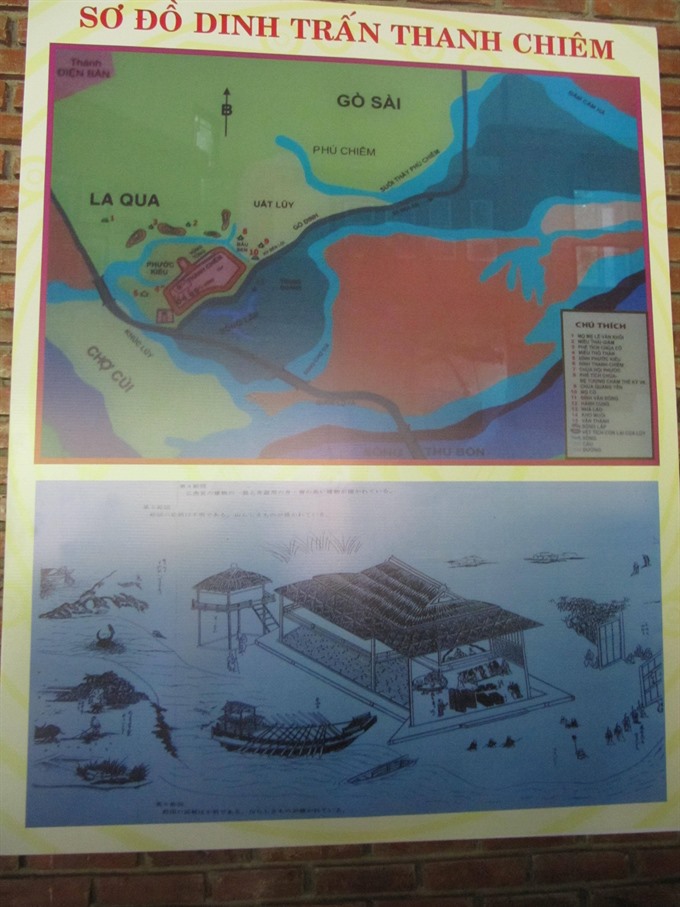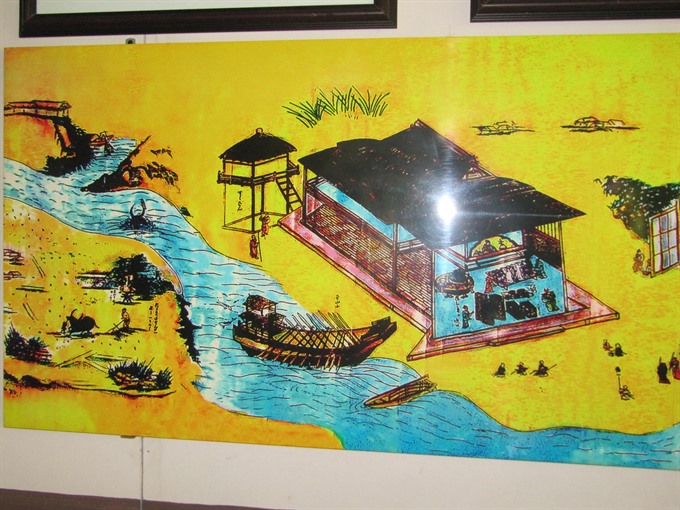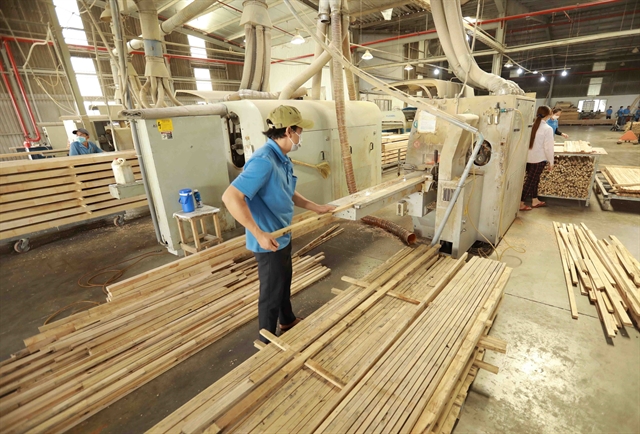 Life & Style
Life & Style

Thanh Chiêm Palace (1602-1883), which was a cradle of Vietnamese romanized script, has been recognised as the National Relic state by the ministry of Culture, Sports and Tourism.
 |
| The blueprint: A re-painted map of Thanh Chiêm Palace. — VNS Photo Công Thành |
QUẢNG NAM — Thanh Chiêm Palace (1602-1883), which was a cradle of Vietnamese romanized script, has been recognised as a National Relic by the ministry of Culture, Sports and Tourism.
Vice chairman of Điện Bàn People’s Committee, Nguyễn Xuân Hà told Việt Nam News yesterday that the certificate will be handed over on June 12 during the 6th Quảng Nam Heritage Festival.
Hà said the recognition will help the local administration and central province reserve funds for fully restoring the collapsed palace.
He said the palace, which was recognised as a provincial relic in 2008, now is on the land area of Nguyễn Du Primary School in Điện Phương Commune.
He said artifacts and ceramic jars and fragments found in the 1990s excavations also proved the existence of the old palace.
At a scientific conference last year, over 30 reports revealed the existence of the defunct palace and the introduction of the Vietnamese writing system attached to western missionaries.
They (scholars and researchers) said the priest Francisco de Pina (1585-1625) was the founder of the modern writing system of the Vietnamese language.
Some ancient documents related to the priest Francisco de Pina revealed that he had lived in Nước Mặn (now Bình Định Province) and Thanh Chiêm Palace, and he was the only western missionary to speak Vietnamese fluently at the time.
According to the Việt Nam Association of Historical Science, the latest documents found and studied by researchers, priests and scientists also determined the conclusion. All agree that the Vietnamese writing system was founded at Thanh Chiêm Palace, which hosted the first school specialising in the teaching of Vietnamese script.
The introduction of the Vietnamese writing system occurred from 1618-21. Alexandre De Rhodes (1591-1660), a French Jesuit missionary and lexicographer, continued Francisco de Pina’s uncompleted research during a move to the north of Việt Nam (1635-1645).
Most information in Việt Nam features Alexandre De Rhodes (1591-1660), a French Jesuit missionary and lexicographer, as the founder of the modern writing system of Vietnamese language, but the latest reports and research on ancient documents are gradually showing that the priest Francisco de Pina (1585-1625) was its creator.
Researchers and archaeologists suspected that one of two ancient tombs at the church of Anre Phú Yên in Điện Phương Commune in Điện Bàn Town are the resting place of Francisco de Pina.
Thanh Chiêm Palace is believed to have been built in 1602 by Lord Nguyễn Hoàng in Cần Húc Village and then moved to Thanh Chiêm Commune (now Điện Phương Commune of Điện Bàn Town, 10km from Cửa Đại beach).
The central province of Quảng Nam has proposed a major archaeological dig at the ruins of the palace to search for further evidence. — VNS
 |
| Living history: A colour copy of the old Thanh Chiêm Palace in Quảng Nam Province. The ministry of Culture, Sports and Tourism has recognised the old palace ((1602-1883)as a National Relic. —VNS Photo Công Thành |




